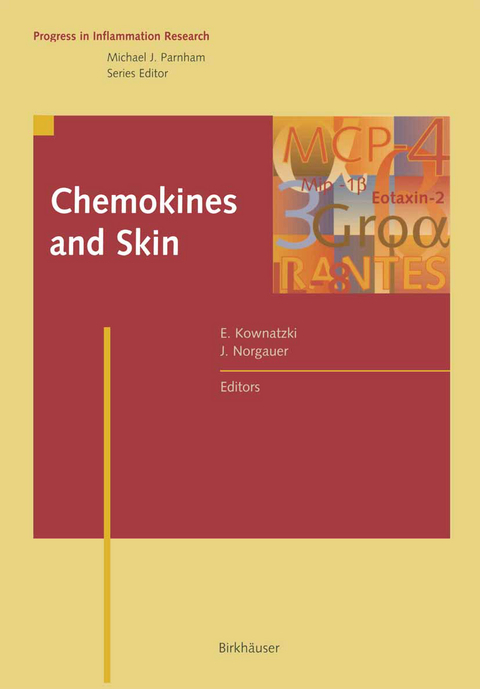
Chemokines and Skin
Seiten
2012
|
1. Softcover reprint of the original 1st ed. 1998
Springer Basel (Verlag)
978-3-0348-9797-6 (ISBN)
Springer Basel (Verlag)
978-3-0348-9797-6 (ISBN)
The accumulation of white blood cells is a hallmark of inflammation. The penetra tion through the vessel walls and the infiltration around the inflammatory stimulus is a complex process which involves active adherence and directed migration of the inflammatory cells. Chemotactic factors stimulate both adherence and migration. Technical tools such as the Boyden chamber [1] made it possible to study leukocyte migration in vitro. This technique allows differentiation between migration direct ed towards a chemotactic stimulus and non-directed migration. Until a decade ago only two naturally occurring molecules had been clearly iden tified as potent chemotactic attractants of neutrophilic granulocytes. They were the split product of the fifth complement component C5a [2] and the arachidonic acid metabolite leukotriene B4 [3]. In 1986, a novel human monocyte-derived chemo taxin attracting neutrophilic granulocytes with a similar potency was found [4]. This report was quickly confirmed by several groups [5-8]. The new factor was purified, cloned and sequenced [9, 10]. The term "interleukin 8" (IL-8) replaced the various names proposed previously [4-8]. Sequence data revealed that IL-8 belonged to a large family of chemotactic cytokines, now called "chemokines" [11]. Four subfamilies were distinguished on the basis of the number and position of the first cysteine residues. They are desig nated accordingly as C, CC, CXC and CX C chemokines [11-13]. The number of 3 human chemokines identified so far is close to 40 [11-13].
Chemokines: Attraction of dendritic cells and role in tumor immunobiology.- Chemokine receptors.- Regulation of gene expression of chemokines and their receptors.- Chemokines and T lymphocytes.- Chemokines and mast cells.- Chemokines and eosinophils.- CXC-chemokines - autocrine growth factors for melanoma and epidermoid carcinoma cells.- Expression of chemokines in dermatoses.
| Erscheint lt. Verlag | 13.10.2012 |
|---|---|
| Reihe/Serie | Progress in Inflammation Research |
| Zusatzinfo | XIII, 138 p. |
| Verlagsort | Basel |
| Sprache | englisch |
| Gewicht | 281 g |
| Themenwelt | Medizin / Pharmazie ► Medizinische Fachgebiete ► Pharmakologie / Pharmakotherapie |
| Medizin / Pharmazie ► Pharmazie | |
| Schlagworte | Biology • Cells • Chemokine • dermatose • Diseases • growth • Growth factor • inflammation • Lymphocytes • melanoma • Molecular Biology • Research • Skin • Tumor |
| ISBN-10 | 3-0348-9797-9 / 3034897979 |
| ISBN-13 | 978-3-0348-9797-6 / 9783034897976 |
| Zustand | Neuware |
| Haben Sie eine Frage zum Produkt? |
Mehr entdecken
aus dem Bereich
aus dem Bereich
Arzneimittelverzeichnis für Deutschland (einschließlich …
Buch | Hardcover (2024)
Rote Liste Service GmbH (Verlag)
109,00 €


